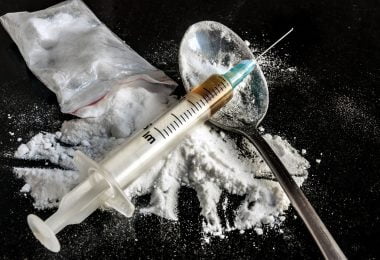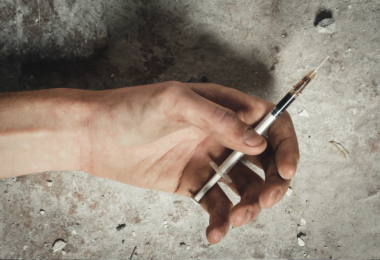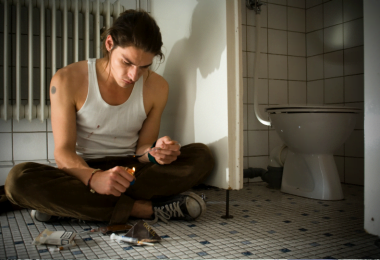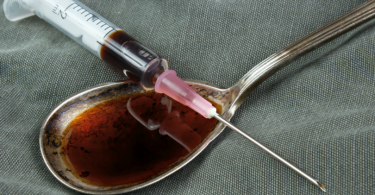Heroin Addiction & Rehab
Find the Best Heroin Treatment Center
Treating a Heroin addiction usually involves therapy, medication, support groups and life changes. Luckily, we can find these treatments are available to both inpatient and outpatient.
Detox is the first step toward overcoming Heroin. It’s best not to try detoxing without the help of a physician. Heroin withdrawal is often painful and can last for weeks for some people; physicians can prescribe medication that can minimize discomfort and help the body slowly readjust.
There are numerous rehabs that offer Heroin addiction treatment throughout the country. But not all treatment centers are the same—some have better track records. Those looking for a rehab should consider their specific needs—such as a polydrug abuse problem—and make sure the treatment center is equipped to help them.
During rehab, residents have a structured routine that includes daily therapy, support groups and activities. Every rehab is a little different with the types of activities they offer. Some focus on physical as well as mental health, while others are more exciting, scheduling hiking excursions and rock climbing. There are some that are more relaxed and offer a more luxurious treatment setting.
Choosing an Inpatient or Outpatient Rehab
Most people in recovery have inpatient rehabilitation to thank for their long-lasting recovery. Inpatient rehab eliminates the environmental and social factors that make it harder to achieve sobriety.
There are many inpatient drug and alcohol treatment centers available nationwide. Finding the right one should correlate with the patients’ needs and seriousness of the addiction.
Some people addicted to Heroin turn to outpatient rehab for help. Outpatient rehab is generally recommended for people with mild addictions; it allows people in recovery to receive therapy and medications while continuing to maintain their work and personal lives.
Going into Residential Heroin Treatment
A recent study from the Australian Patient Pathways National Project demonstrated that, of the various types of treatment programs, residential care was one of the most likely to result in higher rates of continued recovery from addiction.
Most experts assert that the drug rehab program that is most likely to help individuals maintain long-term recovery is residential treatment. While certain addiction cases, such as those with less severe or short-term addictions, may be sufficiently treated with outpatient treatment, severe or long-term instances of addiction most frequently necessitate residential care.
However, not all residential programs are the same, and a person struggling with drug or Alcohol addiction may not know what the ideal residential treatment program looks like. According to the National Institute on Drug Abuse, a combination of medically supported treatments and various types of therapy make up the approach most likely to result in the outcome and long-term maintenance of recovery.
The components of these treatments as used in a residential setting are outlined below to help individuals who are seeking help with their addictions, or their loved ones, to find the residential treatment program most likely to support them in their journey.
Residential rehab provides 24-hour care in settings where the focus is helping individuals achieve and maintain recovery from addiction. Because of this, the programs can offer a variety of services that are more likely to help clients develop the tools to stay in recovery well after leaving the program.
These include:
- Medically supported detox and withdrawal
- Medically supported maintenance care
- Individual therapies, such as Cognitive Behavioral Therapy
- Family or couples counseling
- Building skills and tools that are necessary for life after treatment
- Follow-up care after the formalized program ends
Are you Addicted to Heroin?
For a person with a Heroin addiction, life revolves around the use of the drug. A person like this might become secretive, concerned about money, and willing to skip work and family obligations to get high.
Physical signs include track marks, frequent sedation, clouded thinking and flu-like symptoms between drug doses. The withdrawal symptoms associated with Heroin can be so painful that some users will want to quit, but then continue to use it just to avoid those symptoms.
There is no absolute timeline to follow as the onset of physical dependence depends on numerous factors, including the person’s physiology and the amount of Heroin consumed over time. A person who becomes dependent on heroin is 6-20 times more likely to die compared to a person in the general population.
- Presence of drug paraphernalia
- Changes in behavior
- Use of street slang related to heroin
- Missing valuables or money
- Track marks on the body
- Legal troubles
- Lying and secretiveness
- Chipping (intermittent heroin use)
Building a tolerance is another sign of addiction. When drugs are used repeatedly over time, a tolerance may develop. Tolerance occurs when the person no longer responds to the drug in the way that person initially responded—it takes a higher dose of the drug to achieve the same level of response that was initially achieved.
Heroin Treatment is Private and Confidential
Heroin treatment is strict and dependable with client confidentiality rights. All treatment centers must respect their clients’ confidentiality.
People entering treatment must share information that may be very personal about their experiences with addictions, so staff members can help them, but rehab employees do not share this information with others except when absolutely necessary for medical purposes.
After their intake interview, clients usually receive a copy of the facility’s confidentiality and privacy guidelines, which outline the rights of patients. In many cases, rehab center employees must sign confidentiality agreements as well.
How Long Does Treatment Last?
Individuals progress through drug addiction treatment at various rates, so there is no predetermined length of treatment. However, research has shown that good outcomes are contingent on adequate treatment length.
Generally, for residential or outpatient treatment, participation for less than 90 days is of limited effectiveness, and treatment lasting significantly longer is recommended for maintaining positive outcomes.
For methadone maintenance, 12 months is considered the minimum; some opioid-addicted individuals continue to benefit from methadone maintenance for many years.
What Happens During Heroin Detox?
A supervised detox generally entails a medically monitored detoxification period designed to ensure comfort, address any physical or psychological complications that arise during withdrawal, and, ultimately, minimize the chance of relapse.
Medications like methadone and buprenorphine work to decrease the severity of withdrawal symptoms and are associated with lower relapse rates; however, patients can choose to not receive medication.
During intake, you’ll be given a thorough physical exam to assess your current health status. Your medical history and physical examination findings, in combination with your general evaluation, will help to guide your treatment. It’s extremely important to be honest about your health and avoid downplaying your drug use and physical and mental symptoms. Depending on the program and your needs, your treatment plan may incorporate the use of medications to manage withdrawal and cravings. These may include:
Methadone—Methadone is a relatively long-acting synthetic Opioid agonist medication, most frequently administered for oral use, either in solution or as tablets. It’s available in several doses, and in most cases, will be slowly tapered off as recovery progresses. A single dose of Methadone can last anywhere from 24-36 hours and facilitates the controlled stabilization of a Heroin-withdrawing patient. Methadone maintenance therapy requires users to regularly visit Methadone clinics for administration.
Buprenorphine—Buprenorphine is another synthetic Opioid with only partial-Opioid receptor agonist properties. Like Methadone, Buprenorphine is most commonly taken orally. In the case of Buprenorphine; however, it’s taken sublingually (under the tongue). Buprenorphine only partially activates the brain’s Opioid receptors, providing stabilizing relief from withdrawal but discouraging misuse by introducing a ceiling to the euphoric effects that might otherwise be experienced with a full Opioid agonist.
Naltrexone—A compound that blocks Opioid receptors, minimizing the risks of overdose, but potentially precipitating the sudden onset of Heroin withdrawal symptoms. After Heroin detox is successfully completed, Naltrexone may be used in the longer-term to discourage Opiate abuse by blocking the pleasurable sensations associated with them. For it to be effective as a preventative medication, the individual in recovery must be diligent about taking it (either daily by mouth or as a monthly intramuscular injection).
Suboxone (Buprenorphine and Naloxone)—Specifically designed to discourage misuse; when administered properly, the individual will experience the effects of Buprenorphine. If crushed and injected, Naloxone is released, producing significantly unpleasant withdrawal symptoms.
The Opioid agonist treatment drugs (Methadone, Buprenorphine, Suboxone) will be delivered on a tapered schedule, meaning that the dosage and frequency of administration will decrease over time. The goal is to first rid the body completely of Heroin, then carefully and comfortably rid it of any Opioid influence over time. How long this takes depends on the user’s individual reaction to withdrawal symptoms and the tenacity of their Opioid dependence.
Make a Plan for Aftercare
Addiction doesn’t stop when the treatment period ends, aftercare should be considered a type of continued treatment, which immediately follows a relatively shorter period of addiction treatment care, such as inpatient rehab or intensive outpatient treatment.
Outpatient Treatment: individual lives at home while attending treatment also attending groups and counseling to help build relationships with other individuals struggling with similar issues.
Individual Therapy: the patient will meet one on one with a therapist to build up progress made during initial treatment.
12-step program: fellowship programs—such as AA and NA—provide support and brings encouragement for the individuals on the road to recovery.
Typically, aftercare entails far less frequent contact with treatment personnel than during the acute phase of treatment—therefore, it approximates a more real-life situation of self-sufficiency, individual determination and hard work in maintaining one’s own sobriety.
How to Pay for Rehab
The cost of rehab varies widely depending on the level of care needed. Residential treatment programs offer the highest level of care and are often the most expensive as a result.
Outpatient treatment programs may cost less but may not provide enough support for sustained recovery. Regardless of whether you have health insurance, there is a multitude of options available to help cover rehab costs.
If you need help determining your financial options. Most private health plans do cover at least a portion of substance abuse treatment, and some cover it entirely. To learn your carrier’s benefit coverage for residential treatment, call them or visit their website to find out what’s covered. Many drug treatment centers can do this for you if you’re not sure what to ask. United Healthcare, Cigna, Blue Cross and Blue Shield and Aetna are the four major health insurance companies that cover millions of individuals across the nation.
What are Luxury Rehabs and Executive Programs
Luxury treatment centers provide comfortable facilities that allow you to attend rehab in a style, similar to an all-inclusive vacation resort. While many of these treatment centers resemble a luxurious home or hotel on the outside, it’s important to remember that you will focus most of your time working on your recovery, not relaxing poolside. However, there are many excellent amenities offered at high-end rehabs that can make the experience much more comfortable than a standard rehab facility, including
- Beautiful views
- Swimming pools
- Private rooms
- Private chefs
- Recreation
- Fitness centers
- Yoga
- Acupuncture
- Electronics
- Equine therapy
- Mindfulness training
- Spa service
No single addiction treatment service works best for everyone, so luxury rehab facilities individualize a targeted treatment plan for each person. Most luxury treatment centers are residential facilities at which patients reside continuously during their course of treatment, which is typically 30, 60, or 90 days.








